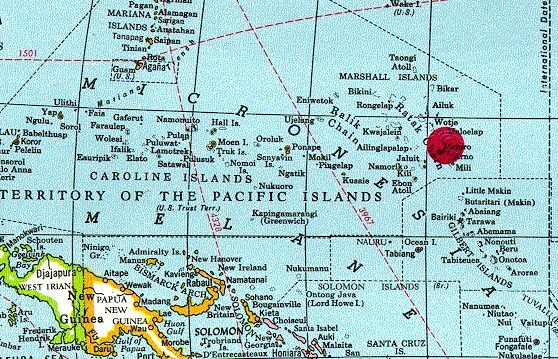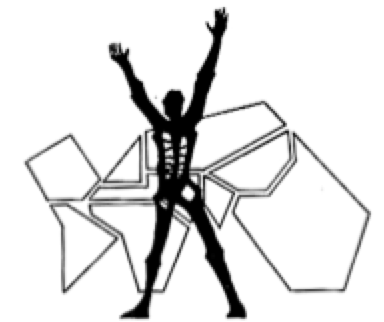Majuro
Human Development ProjectTHE MARSHALLS

HIGHLIGHTS
-
PHOTOS of Majuro Second Consult, May 1976
-
Majuro stories of living and learning in the 1970s, written by Leah and Lee Early: “Insurmountable” … “A Question of Justice” … “Not Our Way“, learning the Marshallese way … “P-O-O-F … It Disappeared”, the Marshallese asserting sovereignty … “Nail File and Hub Cap“, turning the impossible into the possible … “More Than a Statistic” … “This Could Be It!“, life-threatening adventures collecting information from Marshall Island atolls … “The Marshall Islands Preschool” … “Majuro: Claiming the Miracles”, April 11, 1975 … “Stories from Mid-Pacific, 1971-76 … “The Real Sawmill” (as pictured above). … “Don Baker and the Tatami Maru Ship Adventure”
BACKGROUND
GEOGRAPHY: The people of the Marshall Islands are one of three island groupings of Micronesia, occupying one million square miles of ocean. They are located north of the equator, approximately half-way between Japan and Australia, and occupying one million square miles of ocean.
POPULATION: The Marshall Islands are comprised of twenty-one inhabited coral atolls that cover approximately seventy miles of land. Half of the Marshallese people are under eighteen years of age. Approximately fifteen per cent of the adults are employed for wages; the balance are either engaged in subsistence work or are unemployed.
CHALLENGES: The Marshalls Human Development Project (MHDP) was a comprehensive effort involving both the social and economic advancement of the islands. The intention was to significantly upgrade the islands’ economy by establishing a dependable ship schedule to provide functional structures for practical training and social participation in development efforts; and to transpose their ancient heritage into forms relevant to 20th century challenges. The MHDP was seen as a pilot program that could be replicated in the Trust Territory – 2,000 islands and atolls.
HISTORY: The people of Micronesia had five centuries of colonial subjection by a succession of foreign nations. This ended after World War II when the Islands fell under United Nations mandate and the United States assumed the role of trustee.
ACCOMPLISHMENTS
By 1980 the Marshallese celebrated the following accomplishments:
-
In accordance with the current operational plan the people of Marshall Islands intent by 1981 to shift their status to assume new identity as an independent nation. On May 1, 1979, a new government was installed and the first President inaugurated.
-
A new fish freezer storage and ice making plant, in its first 6 months of operation, bought and sold 648,000 pounds of fish.
-
Trans Atoll Service Corporation (TASC) has not only pioneered in a profitable wholesale enterprise but has developed an operational form that extends responsibility, decision-making and training to its 15 staff and 50 stockholders.
-
Development of the outer islands economically and socially has been initiated with the provision of 3 new cargo-passenger ships, construction of 10 new airstrips, initiation of a copralagoon system and preschools.
-
Access to health services has dramatically increased through inoculation campaigns reaching 90% of Marshallese children, construction and staffing of 36 outer island dispensaries and an air evacuation system.
-
Trade between the Marshall Islands and New Zealand has been initiated.
DOCUMENTS
-
Economic Report, December 1976
-
Majuro Report to the Department of Interior, September 1976
-
90 Day Social Demonstration Report, George Holcombe, July 11, 1976
-
Programs Progress Report, February 1976
-
TASC: Enabling Entrance Into the 20th Century, Jon Thorsen, April 11, 1975
-
Proclamation of Community Consensus, January 1975
-
Progress Report of First Majuro Consult, November 1974
-
Majuro Tactical Actions, December 1974 and Tactics Budget, November 1974
-
Majuro Project Overview, November 1974
-
“Social Demonstration and the Majuro Consult”, George Holcombe, October 12, 1974
-
Majuro Program Chart, September 1974
-
Marshall Project Brochure, September 1974
-
Majuro Consult Plan and Majuro House, September 1974
-
Majuro Planning, August – September 1974
-
Marshalls HDP Consultation Summary Statement, September 1974
-
Majuro Implications Discourse, July 18, 1974
-
Majuro Consult Report, GRA July, 1974
